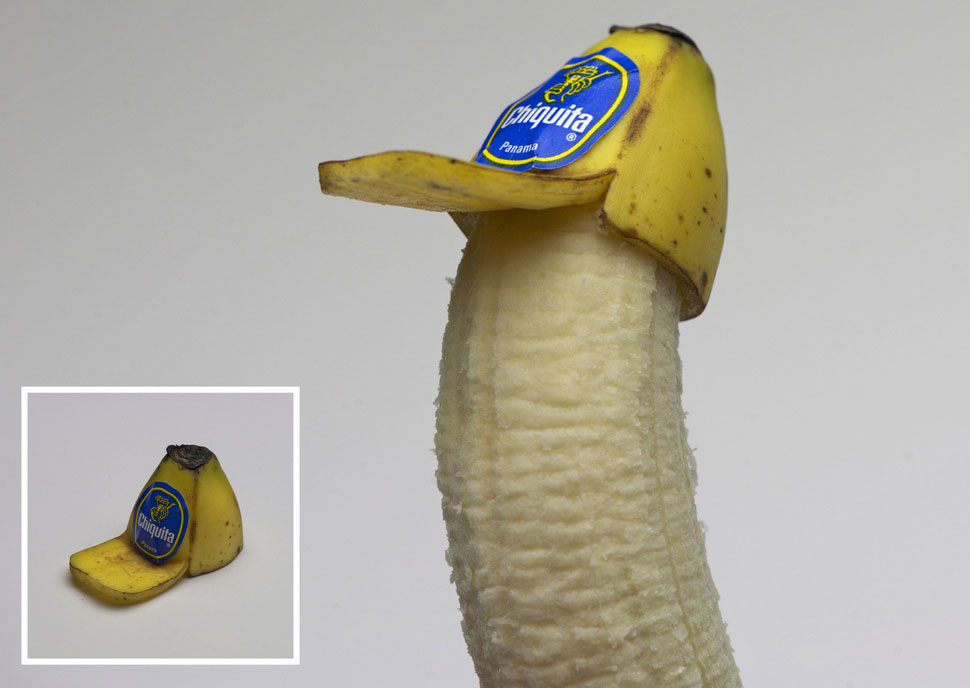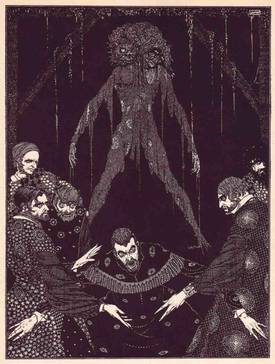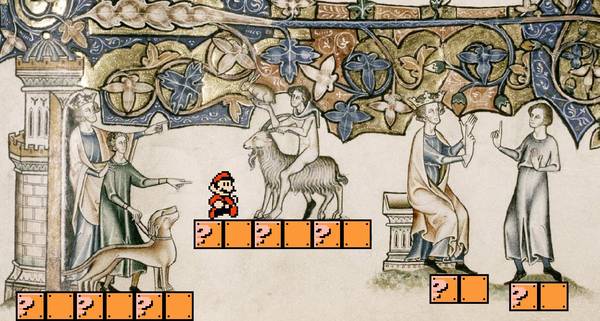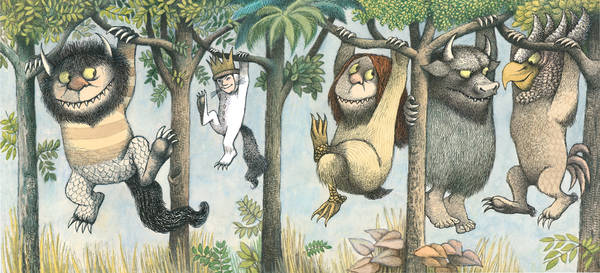Sex and Punishment: Four Thousand Years of Judging Desire -- exclusive excerpt:
Here's an excerpt of the new book,
Sex and Punishment: Four Thousand Years of Judging Desire, by Eric Berkowitz.
 The “raging frenzy” of the sex drive, to use Plato’s phrase, has always defied control. However, that’s not to say that the Sumerians, Victorians, and every civilization in between and beyond have not tried, wielding their most formidable weapon: the law. At any given point in time, some forms of sex were condoned while others were punished mercilessly. Jump forward or backward a century or two (and often far less than that), and the harmless fun of one time period becomes the gravest crime in another. Judging Desire tells the story of the struggle throughout the millennia to regulate the most powerful engine of human behavior.
The “raging frenzy” of the sex drive, to use Plato’s phrase, has always defied control. However, that’s not to say that the Sumerians, Victorians, and every civilization in between and beyond have not tried, wielding their most formidable weapon: the law. At any given point in time, some forms of sex were condoned while others were punished mercilessly. Jump forward or backward a century or two (and often far less than that), and the harmless fun of one time period becomes the gravest crime in another. Judging Desire tells the story of the struggle throughout the millennia to regulate the most powerful engine of human behavior.
Writer and lawyer Eric Berkowitz uses flesh-and-blood cases—much flesh and even more blood—to evoke the entire sweep of Western sex law, from the savage impalement of an Ancient Mesopotamian adulteress to the imprisonment of Oscar Wilde in 1895 for “gross indecency.” The cast of Judging Desire is as varied as the forms taken by human desire itself: royal mistresses, gay charioteers, medieval transvestites, lonely goat-lovers, prostitutes of all stripes, London rent boys. Each of them had forbidden sex, and each was judged—and justice, as Berkowitz shows, rarely had much to do with it. With the light touch of a natural storyteller, Berkowitz spins these tales and more, going behind closed doors to reveal the essential history of human desire.
From Sex and Punishment: "Female Love and Leather Machines in the Early Modern Period"
Perhaps because the Bible ignores same-sex female relations, or maybe because men cannot imagine that women could experience sexual pleasure without them, lesbian relations have been given inconsistent treatment by the law. It was mostly ignored until the Renaissance, when courts started to punish women who dressed like men and used "artificial instruments" with each other.
Can two women love each other sexually? Eighteenth-century morals said no, at least where the females involved were respectable. Among the better classes, lesbian relations were impossible to imagine. Good women could love and embrace each other, sleep together, and write each other passionate letters; all that was noble. But loving and making love were entirely different matters. Unless they were gratifying their husbands, women of "character" were imagined as sexually numb creatures. British judges allowed that females of "Eastern" or "Hindoo" nations might act differently, but not the women of the "civilized" world.
When Marianne Woods and Jane Pirie, the unmarried co-mistresses of a tony Scottish boarding school for girls, were accused in 1811 of "improper and criminal" conduct with each other, every single student in the school was removed by their parents. Woods and Pirie were ruined overnight. Their primary accuser was a student, the Indian-born grandchild of Dame Helen Cumming Gordon. The girl, who had shared a bed with Miss Pirie, told Dame Gordon that she had been woken up by Miss Woods climbing on top of Miss Pirie and "shaking" the bed. "Oh, do it, darling," Miss Pirie reportedly said as they rolled around together in "venereal" bliss. The girl further reported to that the two women cooed as their bodies made the sounds of a "finger [in] the neck of a wet bottle."
Dame Gordon sent out letters telling parents that their children were in "grave danger," and that was it for the school. Pirie and Woods filed a libel suit against Gordon to recover their lost life savings, if not their reputations.Hundreds of pages of trial transcripts later, the two women won, not because they did not sleep together or love each other intimately -- they did -- but because the judges could not accept that two hard-working, middle-class women such as these two could possibly have had sex with each other.
The court saw the stakes as much greater than the personal fortunes of two schoolmarms. For one of the three judges, Lord Meadowbank, the case implicated all well-behaved British women. A world in which women satisfied themselves without need of men was impossible to entertain: "[T]he virtues, the comforts, and the freedom of domestic intercourse, mainly depend on the purity of female manners, and that, again, on the habits of intercourse remaining as they have hitherto been -- free from suspicion." As men carried both the sexual machinery and the urge, it was easy for the court to infer that sex would result whenever a man was in bed with another:
If a man and a woman are in bed together, venereal congress would be presumed. And perhaps, even if a man and a man are in bed together without necessity, and unnatural intention may often be inferred.
But that is where Lord Meadowbank drew a bright line. "A woman being in bed with a woman cannot even give the probability of such an inference. It is the order of nature and of society in its present state. If a woman embraces a woman, it infers nothing."
Pirie and Woods admitted that they slept together often, as many people did, and that their "shifts" had been raised in bed, but nevertheless they claimed to have no idea of what Dame Gordon was accusing them of really doing. The court knew, but it refused to go there. In our time, no one would believe that the relationship between Pirie and Woods was asexual. In Lillian Hellman's 1934 Broadway stage adaptation of the story,
The Children's Hour, a physical relationship between the two women (cast as mistresses of a snooty New England boarding school for girls) was strongly implied, so much so that the play was banned in several cities. Hellman stressed the viciousness of the young accuser in making the lesbianism charge, and also had the two women deny any sexual contact, but the intimate nature of the relationship was what drove the drama. Without the strong whiff of lesbianism, the play would have been puerile and unrealistic. (To appease censors, the 1936 Hollywood film based on the play was recast as a heterosexual love triangle, although a 1961 remake featured the lesbian relationship intact.)
Hellman came along more than two hundred years after the fact. The critical point that drove the court's decision in the Pirie/Woods case was the conviction that women could not have sex with each other as women, meaning that some phallus had to be put to use. Without such a device, sex was as likely as "murder by hocus pocus." "Gross immorality" might result from two females sharing a bed together, even "licentious buffoonery," but without the involvement of something resembling a male, there was nothing illegal to it. Some women, the court allowed, were "peculiarly organized" as hermaphrodites for quasi-male sex -- but that was the kind of thing that occurred in Africa or the exotic East. The historical use of dildos was also examined by the court, but there was no proof of that in this case. Pirie and Woods were not, in any event, the sort to do anything like that, the court felt. "I have no more suspicion of the guilt of [Pirie and Woods]," said another of the judges, "than I have of my own wife."
The result of the Pirie/Woods case would have been different had one of them assumed a male role, either by wearing men's clothing or using a penis substitute. In that case, any judge in England would have found a way to punish them severely. In 1746, Dr. Charles Hamilton was convicted in Somersetshire (now Somerset) on charges of fraud and vagrancy for impersonating a man. As widely reported at the time, Hamilton was in fact a woman named Mary Hamilton. For the offense of deceiving another woman into marrying and having sex with her, Hamilton was publicly whipped until her back was "almost flayed" and then sent to prison for six months.
Her criminal life had begun in her teens, when she fell in love with a neighbor girl. The romance ended when the girl became involved with a man and married him. Inconsolable, Hamilton sought a change of scene and identity. She moved to Dublin, where she set herself up as a male Methodist teacher and courted local women. When she was about eighteen, she won the affections of a sixty-eight-year-old cheese seller's widow. The couple married, and she continued to play the role of a man "by means," in the words of one contemporary writer, "which decency forbids me even to mention." The wife's discovery that her young husband was a woman caused a predictable row, resulting in Hamilton fleeing town with a pocketful of the woman's money.
Further adventures landed Hamilton in Wells, Somersetshire, where she assumed the male doctor's identity and began a romance with Mary Price, a naive eighteen-year-old girl. A two-day courtship resulted in a two-month marriage. Hamilton apparently used a dildo to satisfy Price, as "he" had likely done with other female bedmates. The marriage was sexually satisfying for Price, and might have gone on indefinitely had Hamilton not been recognized by an old acquaintance and denounced. Price tried to defend her husband's manliness, but ultimately she had to admit that she had been deceived. Her neighbors laughed at her and pelted her with dirt.
Hamilton may have been a cad -- there was word she had deceived fourteen women into marrying her -- but English law did not explicitly punish female sodomy. Henry VIII's buggery statute of 1533 dealt only with sexual relations among men or between men and beasts. Women weren't mentioned. But gaps in the rules have rarely stopped prosecutors from finding something on which to hang a charge. The authorities went after Hamilton under the vagrancy laws for "having by false and deceitful practices endeavored to impose on some of his Majesty's subjects."
The case against her was strengthened by the discovery of an object of a "vile, wicked and scandalous nature" found in her trunk. Most likely some kind of dildo, it was used as evidence of the means by which Hamilton "entered" Mary's body "several times." Hamilton was given the maximum punishment the vagrancy laws allowed. By assuming a sexually aggressive male identity, she had usurped the male prerogative of penetration, considered the essence of the sex act.
Early Modern Germany's sex laws admitted no ambiguity: "Female sodomy" had been an explicit capital crime since 1532. While the law was not often enforced, the threat of the death penalty was real. That was the fate of Catharina Linck, burned in 1721 for living as a man with her young wife, Catharina Muehlhahn. Before becoming a husband (and an abusive one at that), Linck had been a preacher and a soldier in three armies, among her other personae. Court records from Saxony, where she was tried and executed, reflect the difficulties the judges faced in dealing with a young woman who already assumed no fewer than nine separate male identities.
Linck had grown up in an orphanage, and left it dressed as a young man "in order to lead a life of chastity." She soon fell in with an ecstatic Christian cult given to hitting their heads against walls and speaking in tongues. For two years, Linck traveled with the group as an itinerant preacher and soothsayer, though her predictions did not always materialize -- when she urged two men to walk on water and they sank, she fled. She became a swineherd, and later joined the army of Hannover as a musketeer until her desertion three years later.
Next came a stint in the Polish army. Her regiment was captured by French troops, but she managed to escape imprisonment. Her subsequent hitch with the Hessian army lasted about one year. Linck had by now fashioned a leather penis for herself, to which she appended two stuffed testicles made from a pig's bladder. The contraption, held in place with a leather strap, served her well: She used it on a string of young girls, widows, and prostitutes.
Tiring of the military life, Linck reinvented herself as a dyer of fine clothes, met Muehlhahn, and married her. During the wedding, someone called out that Linck already had a wife and children, but she produced a document and two witnesses to prove the allegation false. The newlyweds moved in together, and Muehlhahn would later report that their sex life was active and satisfying, despite the pain she sometimes experienced on account of Linck's large phallus. Their life together out of bed was less successful. Money was always tight, and before long they were begging. Linck also beat Muehlhahn frequently.
One night, as Linck slept, Muehlhahn took a closer look at her husband and discovered the leather truth. Linck awoke and begged Muehlhahn to keep her secret. Muehlhahn agreed, though she demanded that Linck no longer "tickle" her with the device. Finally, Muehlhahn's mother, who had already suspected that her boorish son-in-law was in fact a woman, could bear the union no longer. With the help of another woman, she attacked Linck, tore off her trousers, and confiscated the ersatz genitals, which ended up in court as critical evidence.
Linck's defenders did not let her go to her death before making some creative legal arguments. First, they asked, didn't the Bible only proscribe unnatural acts between women and animals? Moreover, could there be sodomy without semen? But the court was not swayed by such fine distinctions: "The vice is the same for all," the judges pronounced, even if women only engaged in "bestial rubbing and sexual stimulation of their lewd flesh." The court ruled that the penalty was death by fire under both divine and secular law, as both male and female sodomites induced God to rain fire and brimstone down upon the Earth. Linck was duly executed. The "simple-minded" Muehlhahn was jailed for three years, and then banished.
Buy
Sex and Punishment: Four Thousand Years of Judging Desire on Amazon













